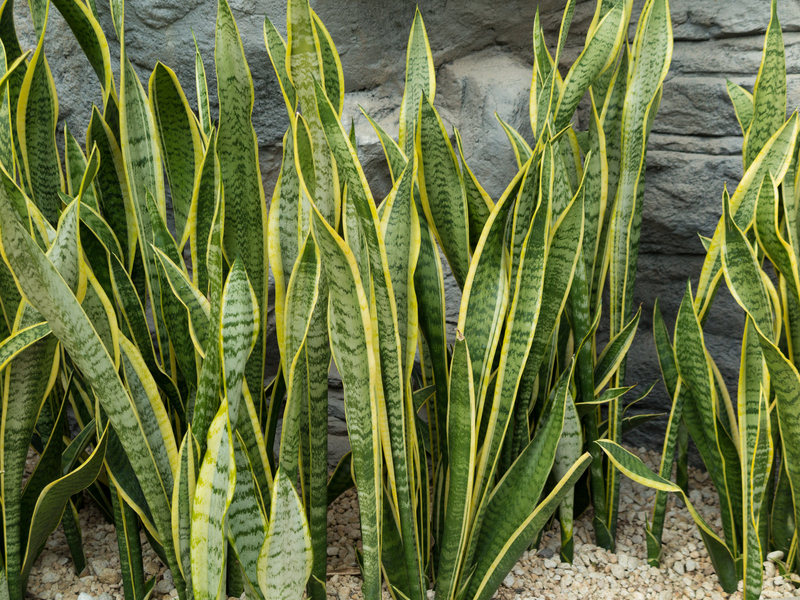Transforming Organic Waste into Fertile Soil
Posted on 17/09/2025
Transforming Organic Waste into Fertile Soil: An Innovative Approach to Sustainability
In the face of increasing environmental concerns and a growing population, efficient and sustainable waste management has become a global imperative. Transforming organic waste into fertile soil emerges as a brilliant solution that not only reduces landfill loads but also creates a valuable resource for agriculture and gardening. In this article, we explore the science, methods, benefits, and best practices for converting kitchen scraps, yard trimmings, and other organic materials into nutrient-rich soil, promoting a circular economy and fostering healthier ecosystems.

Understanding Organic Waste and its Value
What is Organic Waste?
Organic waste refers to any biodegradable material derived from plants or animals. Common examples include:
- Food scraps (vegetable peels, fruit cores, coffee grounds, eggshells)
- Yard trimmings (grass clippings, leaves, branches)
- Paper products (uncoated paper, napkins, cardboard)
- Animal manure
Globally, billions of tons of organic matter are discarded each year, much of which ends up in landfills, producing harmful greenhouse gases like methane. Yet, with proper handling, this "waste" can be harnessed into an asset for environmental health and agricultural productivity.
Why Transform Organic Waste into Fertile Soil?
The process of transforming organic waste into fertile soil is commonly achieved through composting and vermicomposting. These natural methods accelerate the breakdown of organic materials, transforming them into humus--an essential component of healthy soil. The benefits are manifold:
- Environmental Protection: Reduces methane emissions, minimizes landfill dependency, and lowers carbon footprint.
- Soil Enrichment: Improves soil structure, increases water retention, and supplies essential nutrients to plants.
- Economic Savings: Cuts down waste management costs and reduces the need for chemical fertilizers.
- Promotes Circular Economy: Closes the nutrient loop by returning organic matter to the earth.
How to Transform Organic Waste into Nutrient-Rich Soil
The Science Behind Composting
At its core, composting is a controlled biological process where microorganisms such as bacteria, fungi, and actinomycetes decompose organic matter. By managing factors like moisture, temperature, and aeration, these organisms efficiently break down waste into dark, crumbly, fertile soil.
Basic Composting Process Explained
- Collection: Gather organic materials such as fruit and vegetable scraps, coffee grounds, grass clippings, and leaves. Avoid adding meat, dairy, or oily foods as they can attract pests and slow down decomposition.
- Layering: Alternate between brown (carbon-rich, like dry leaves and cardboard) and green (nitrogen-rich, like food scraps and grass clippings) materials.
- Moisture Control: Keep the compost pile moist--about as damp as a wrung-out sponge.
- Aeration: Turn the pile regularly to introduce oxygen, which supports aerobic decomposition and prevents odors.
- Maturation: The compost is ready when it looks dark, smells earthy, and is crumbly to the touch--this can take as little as 2-4 months under ideal conditions.
Advanced Composting Techniques
- Hot Composting: By maintaining the pile's internal temperature between 130?F and 160?F, this method rapidly decomposes materials and destroys weed seeds or pathogens.
- Vermicomposting: Using worms, particularly red wigglers, to consume organic waste and produce high-quality castings (worm manure), significantly accelerating the process.
- Bokashi: A Japanese technique that ferments food waste using beneficial microbes before traditional composting, suitable for urban and indoor settings.
Tips for Successful Composting
- Maintain Balance: The ideal carbon-to-nitrogen ratio is about 30:1. Excess nitrogen can cause odors; too much carbon can slow the process.
- Chop Materials: Smaller pieces decompose faster. Shred branches, break down cardboard, and cut up large fruit peels.
- Avoid Compaction: Fluffy piles allow better airflow. Overly compacted compost may become anaerobic and smelly.
- Manage Pests: Cover food scraps with a layer of browns and avoid adding animal products.
- Monitor Temperature: A thermometer helps track progress--the right heat signals active decomposition.
From Waste to Wealth: The Benefits of Compost-Enriched Soil
Key Advantages of Using Compost
High-quality compost turns ordinary soil into a nutrient-dense growing medium. Here's how it transforms plant health and agricultural productivity:
- Improved Soil Structure: Compost enhances the aggregation of soil particles, facilitating root penetration and drainage while preventing erosion.
- Boosted Fertility and Nutrients: Rich in essential elements, compost supports robust plant growth and reduces dependence on synthetic fertilizers.
- Increased Moisture Retention: The organic matter acts like a sponge, preserving water in the root zone and decreasing irrigation needs.
- Enhanced Biological Activity: Microorganisms and beneficial insects thrive in compost-amended soil, naturally suppressing diseases and pests.
Environmental Impact: A Step Towards Zero Waste
Widespread adoption of composting and the transformation of organic waste into fertile soil significantly:
- Reduces greenhouse gas emissions from landfills.
- Prevents leachate pollution entering water systems.
- Supports reforestation, landscaping, and regenerative agriculture efforts.
- Promotes biodiversity in urban and rural environments alike.
Transforming Organic Waste at Different Scales
Home and Community-Level Composting
Individuals and neighborhoods play a vital role in managing organic waste at the source.
- Backyard Composting: Simple bins or piles suffice for most households, allowing homeowners to recycle kitchen and yard waste.
- Community Gardens: Shared composting systems benefit schools, allotments, or city campaigns, fostering collective stewardship and education.
Industrial and Municipal Composting
For larger volumes, centralized composting facilities use advanced technologies:
- Windrow Composting: Large piles (windrows) of organic waste are mechanically turned and aerated.
- In-vessel Systems: Enclosed, temperature-controlled reactors speed up decomposition, producing compost year-round.
- Anaerobic Digestion: Organic waste is broken down without oxygen to produce both biogas (energy) and digestate (fertilizer source).
Municipal compost programs divert tons of waste from landfills yearly while supplying local farmers and landscapers with premium soil amendments.
Innovative Upcycling Approaches
- Black Soldier Fly Larvae: These insects efficiently consume food waste, producing both protein-rich feed and a nutrient-packed soil amendment.
- Biochar Production: Through pyrolysis, organic matter becomes biochar, a stable form of carbon that locks away carbon dioxide and improves poor soils.
Practical Uses for Compost-Enriched Soil
- Vegetable Gardening: Mix compost into garden beds for healthier, more productive plants.
- Potting Soil: Blend with sand, perlite, or peat for a custom homemade potting mix.
- Landscaping: Apply as a top dressing to lawns and ornamental beds for sustained vigor.
- Tree Planting: Backfill sapling holes with compost to jumpstart root establishment.
- Erosion Control: Apply to rehabilitate degraded land and prevent soil loss.
Challenges in Transforming Organic Waste and How to Overcome Them
Despite its advantages, composting does present some hurdles:
- Inadequate sorting of household waste can introduce plastics or contaminants.
- Lack of space or knowledge deters participation.
- Poor management leads to odors or pests.
Solutions:
- Education: Public awareness campaigns, school programs, and workshops.
- Infrastructure: Supporting community compost sites, curbside collection, and accessible bins.
- Incentives: Tax breaks, reduced waste fees, and compost rewards.
Case Studies: Success Stories from Around the World
- San Francisco, USA: The city's "Zero Waste" program mandates compost collection, diverting over 650 tons daily and contributing to lush urban parks.
- Kampala, Uganda: Small-scale composting helps urban farmers boost yields and incomes while cleaning up neighborhoods.
- Copenhagen, Denmark: City-wide food waste collection feeds biogas plants and returns enriched compost to municipal gardens.

Transforming Organic Waste: Getting Started
Essential Steps for Beginners
- Start Small: Even a single compost bin can divert substantial waste from landfill.
- Space Selection: Place bins in shaded, well-drained areas for optimal conditions.
- Track Progress: Watch for temperature changes, volume reduction, and the earthy smell as indicators of success.
The Future of Soil Fertility: Embracing a Circular Approach
Transforming organic waste into fertile soil is more than just a sustainable trend--it's a fundamental shift in how we view and manage resources. By participating in composting, whether at home or supporting municipal initiatives, we can help create a greener future where no nutrient goes to waste and every kitchen scrap becomes the seed of something new.
Let's take collective action to close the organic waste loop, protect the environment, and foster resilient communities. The journey from leftover food to thriving, fertile soil starts with us all--let's dig in!

